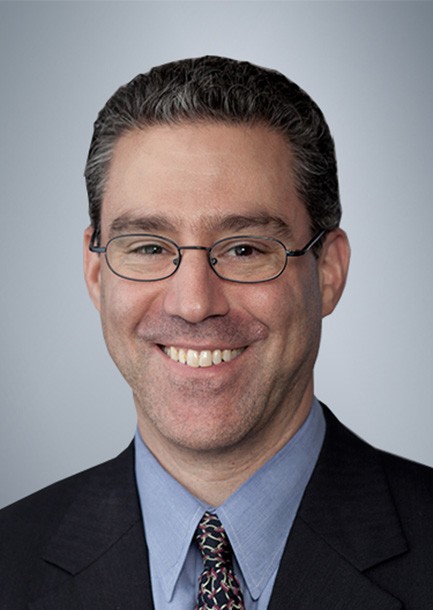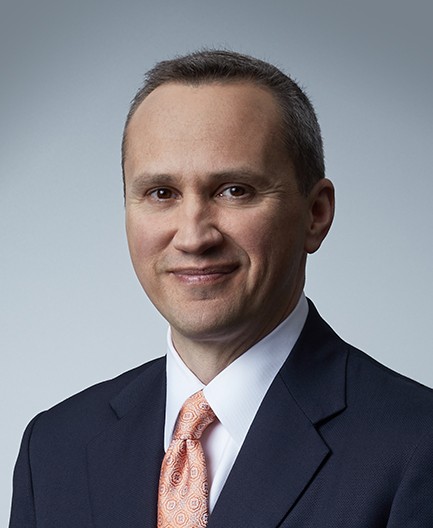Bill Adams, Erik Weisman and Rob Almeida provide a macroeconomic outlook for 2022.



In this 2022 macroeconomic outlook, we would like to provide you with a peek behind the curtain of what our investment teams are seeing in the global investment landscape and how that’s impacting our outlook. Our framework is informed by micro/sector level commentary generated by our global research platform and our team of analysts around the world. We like to call our framework “macro through micro” because that’s the best way to bring our investment process to life for you.
Inflation
Inflation is a constant theme in everything that we’re dealing with as investors. We believe the inflation narrative has been broader and longer term than was expected a year to 18 months ago. Inflationary pressures are widespread and persistent enough that inflation could settle at a higher level than that of the last business cycle. It remains high in the United States and most of the developed world and is also elevated in the emerging world. In order for inflation to continue at this pace, we will need to see bottlenecks get worse, energy prices double again and the price of goods rise dramatically.
Takeaway
We believe inflation is going to fall in 2022, and it’s most likely going to fall a significant amount. The question really is where will it be when the dust settles? Will it look more like prepandemic levels where inflation was running around 2%, or will it look like prior business cycles, when inflation was running closer to 3%? We believe the markets believe it’s going to go to something closer to 2%, although our view is a little higher than that.
“I think there are inflationary pressures that are widespread enough and persistent enough, such that we will see inflation that settles down at a higher level than what we experienced during the last business cycle.”
Erik Weisman
The consumer
The impact of the underlying inflationary conditions that are being faced by the average consumer, whether in the US or other marketplaces around the world, can function in several ways. It can benefit consumers through a wage inflation dynamic, but it can also hinder consumers if real wages are not keeping up and be a potential headwind to growth. Corporations are facing a different paradigm of higher structural costs from labor, the environment, and other avenues in the face of a fiscal drag, the higher cost of capital, higher rates and other factors, and that’s also an important dynamic.
Takeaway
Consumers probably have a little more money in the bank as a result of fiscal stimulus along with a relatively higher level of aggregate wealth. In the short term, we have been expecting that this excess savings would be deployed throughout 2022 and create a glide path into a new steady state of potential growth that may be higher than the last business cycle. If consumers take that savings and spend it on higher prices for gas, food and other goods or services through the second half of 2022, then they might end up in weaker position than expected.
“So while the consumer is going to remain really strong, I think that puts probably low odds of a recession in 2022.”
Rob Almeida
Interest rates
Most global central banks in developing and certainly in the developed world are facing similar types of challenges. We think it’s important to try to avoid today’s and tomorrow’s headlines and quick market reactions in order to think about central banks on a longer-term basis. We believe that the task at hand for central banks to generate a soft landing is very difficult. A central bank could raise rates sooner than maybe it should and this could cause the very recession that it’s trying to prevent. Or a central bank could sit on its hands, lose control of the narrative and the inflationary anchor, and then have to catch up and perhaps be more aggressive in hiking rates, which could cause a recession. The question for 2022 is: Will inflation come down enough for central banks to feel comfortable?
Takeaway
Central banks are really front and center in everyone’s narrative. We believe they want to be patient. We believe they’re aware of their footprint in the marketplace today, but at minimum we can say in no uncertain terms, that financial conditions will be tightening in 2022 and therefore likely more conducive to errors. And what we advocate for is the active management of that fixed income exposure. If you look back at US history, the primary example of the soft landing is the mid-1990 period for the rate hiking cycle, as most rate hiking cycles result in business cycles that then have an expiration date of two to four years later, whereas most other recent hiking cycles have precipitated a recession within a few years. We think it’s more difficult now because inflation is so much higher.
“We firmly believe as a company that interest rates and duration play a role in a diversified portfolio”
Bill Adams
Valuation
We assess the risks that investors should be aware of and put them in the context of valuations in both the equity and fixed income markets, which can alter return expectations. In the face of what is probably going to be a different margin and volatility of margin profile, valuations will have to be adjusted as well.
Takeaway
We believe that returns will have a different profile over the next five to 10 years than over the last several decades. Interest rates are very low and equity valuations are historically high, which means that their yields are very low. Thus you can probably expect to see lower returns than history would suggest, which aligns with our long-term capital market expectations. All financial assets derive their value off cash flows, and we believe that cash flows will not be as abundant as they have been. And those that have it should earn a scarcity premium or scarcity value. Whether you look at risk markets through the variety of risks that are available in fixed income, investment grade, high yield, emerging or other asset classes we manage, they are in a really, really challenging position right now as it relates to valuation.
“I am excited about a very different return and risk dynamic because I think it favors effective security selection”
Rob Almeida
Emerging markets
When we think more broadly and globally about emerging markets in this environment, we have a US Federal Reserve that’s coming back into the marketplace with the potential for tightening and the US dollar has rallied in the face of that. There are geopolitical concerns, whether it’s Russia, Ukraine or China’s growth slowing. We’re seeing a host of factors that could create challenges in the EM space. We think a constructive narrative on EM is generally independent of growth. It is about the transition from capital-intensive to capital-light businesses, a transition not dissimilar to what the US and other developed economies went through over a century ago, when the constituents were GDP-dependent and capital-intensive, the labor costs were high and the operating margins low. And that transition to companies generating higher free cash flows warrants a narrowing of the valuation discount that emerging markets tend to get relative to develop markets. Again, it’s about profits.
Takeaways
We expect China to grow more slowly over time. It’s already happening as the country more firmly establishes a middle-income level and maybe even goes higher than that. We expect it to grow as if it’s a developed economy, at 2% to 4%. But as we think about EM more broadly in 2022, the environment we’re likely to see at least in the first half of the year isn’t a great mix. Emerging markets don’t want higher rates from the Fed or a stronger US dollar, and they don’t want weakness in China. But these things are occurring now. We’ll see what happens with the dollar since it’s hard to know what is priced in, but the mix emerging markets really need is one in which the Fed is further along in raising rates. The other import factor in all of this has been the coronavirus, as emerging markets have generally been slow to vaccinate.
“We believe the early part of 2022 is not particularly conducive to risk on for EM assets broadly, but there is always the potential for opportunity when EM is evaluated on a country-by-country or company-by-company basis.”
Erik Weisman
Conclusion
The best way to characterize 2022 is that it will very likely be a period of volatility, probably more so than we witnessed in most of the non-recession years that we have witnessed over the last few business cycles. It’s the type of environment we expect to see in the rate markets, certainly in the risk markets, and in the equity markets. We’re generally underweighting our benchmark durations in a variety of portfolios, especially the front end and the belly of most global curves. From a fundamental point of view, whether it’s growth or inflation, we do think interest rates will move higher than today’s levels. Our ultimate goal is to be active and effective allocators of capital for investors. And that’s a core characteristic of how we approach this idea of macro through micro investing and how we try to tie it all together on behalf of our clients.
“Our point of view is that this is no longer a beta-driven environment. Investors need to be very cautious in this environment with what we would describe as just general market exposure. It has become markedly more of an alpha-driven market. And in that regard, we think investors are really well placed to seek out performance through security selection and through a stringent allocation approach to their risk budgets.”
Bill Adams
Definitions
Alpha is a measure of the portfolio’s risk-adjusted performance. When compared to the portfolio’s beta, a positive alpha indicates better-than-expected portfolio performance and a negative indicates alpha worse-than-expected portfolio performance.
Beta is a measure of the volatility of a portfolio relative to the overall market.
The views expressed are those of the author(s) and are subject to change at any time. These views are for informational purposes only and should not be relied upon as a recommendation to purchase any security or as a solicitation or investment advice. No forecasts can be guaranteed.

